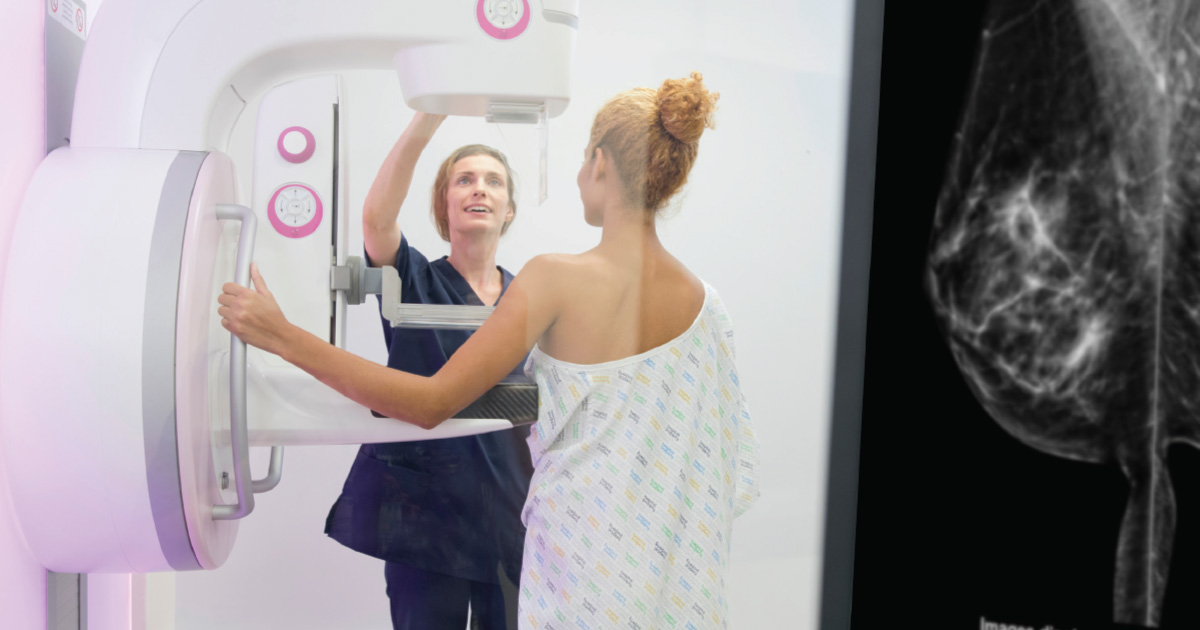
Breast Health, COVID-19
The COVID-19 Vaccine and Breast Health: What You Need to Know
With 1 in 8 women diagnosed with breast cancer in their lifetime, prevention and early detection are key. That’s why we’re clarifying what you need to know about the COVID-19 vaccine and your breast health, so you can stay on top of your important screenings and preventive care this year with confidence.
The COVID-19 vaccines have proven to be highly effective in preventing severe illness from the virus, but as with most vaccines, there is the potential for side effects. We now know that as a result of the vaccine, some women may experience temporary swelling in their lymph nodes under their arm in which the shot was administered. While this may sound alarming, this is a completely normal response and is proof that the vaccine is working. We have lymph nodes throughout our body, with bigger clusters in certain areas including under the arm. When our body detects a foreign invader, the lymph nodes release extra white blood cells to help fight infection and filter out the invader. This interaction can cause the lymph nodes to swell.
While this swelling is a completely normal occurrence, this has caused some concern given the potential for swollen lymph nodes viewed in imaging to create the false perception of concerning mammogram results.
COVID-19 Vaccine and Mammograms
Because the COVID-19 vaccine may cause swollen lymph nodes, doctors are recommending you take this into account when scheduling a mammogram.
In order to prevent a false alarm, the American College of Obstetricians and Gynecologists (ACOG) recommends scheduling your annual mammogram four weeks after your last dose of the vaccine to allow time for any swelling to settle. Alternatively, you can schedule your mammogram prior to receiving the first dose of your vaccine.
When you are coming in for your mammogram, it’s best to let your technician know your recent vaccine history including when you received your doses and in which arm you received your shot. This will allow the doctor who analyzes the x-ray scan (the radiologist) to better understand the results.
If you’re experiencing any breast cancer symptoms or have recently had an abnormal mammogram, and need a diagnostic mammogram, don’t wait. Your doctor would rather catch any potential breast cancer early, even if it means having to do extra testing.
Why Mammograms Are Important for Prevention
Mammograms are critical to monitoring your breast health. Through a mammogram, a radiologist examines an x-ray of your breast tissue which allows them to detect any abnormalities. Mammograms are intended to catch any potential cancerous cells before you can feel them or start experiencing symptoms.
The American Cancer Society estimates that 1 in 8 women will develop breast cancer in her lifetime. But through regular screenings, you can increase the chances of catching cancer early, when it is most treatable. Early detection is crucial. In fact, the 5-year survival rate is 99% when breast cancer is diagnosed at the local stage.
Often, doctors can’t definitively pinpoint what may make one woman more susceptible to developing breast cancer than another. There are so many factors in our world today from our environment, lifestyle, genetics, to age that can play a role. As we grow older and our body changes, cells can mutate on their own. But, knowledge is power and by taking the action of getting a mammogram you can increase your chances of early detection.
How Will I Know When to Schedule My Mammogram?
The American Cancer Society screening guidelines outline that if you have a known family history of breast cancer or a genetic mutation known to increase breast cancer risk (i.e. the BRCA gene), you should get a breast MRI and mammogram ever year starting at the age of 30.
If you do not have any family history or known risk-factors, the guidelines suggest you begin screening with a mammogram at age 40. You don’t need an order form or prescription from your doctor to receive a mammogram. Women 40 years and older can schedule one annually, at any time.
Women ages 40-54 should continue to get mammograms each year. Even if you’ve had a normal mammogram in previous years, it’s still recommended you get regular screenings annually. At the age of 55, a woman can switch to a mammogram every other year, if she chooses.
Final Thoughts on Mammograms and COVID-19
While it’s important to understand the impact the COVID-19 vaccine could have on your mammogram results, there is no reason to put your health on hold. Both the COVID-19 vaccine and an annual mammogram are essential parts of your preventive care.
And remember, if at any point you detect any lumps or pain in your breast tissue or underarm, it’s always best to consult with your doctor.



















